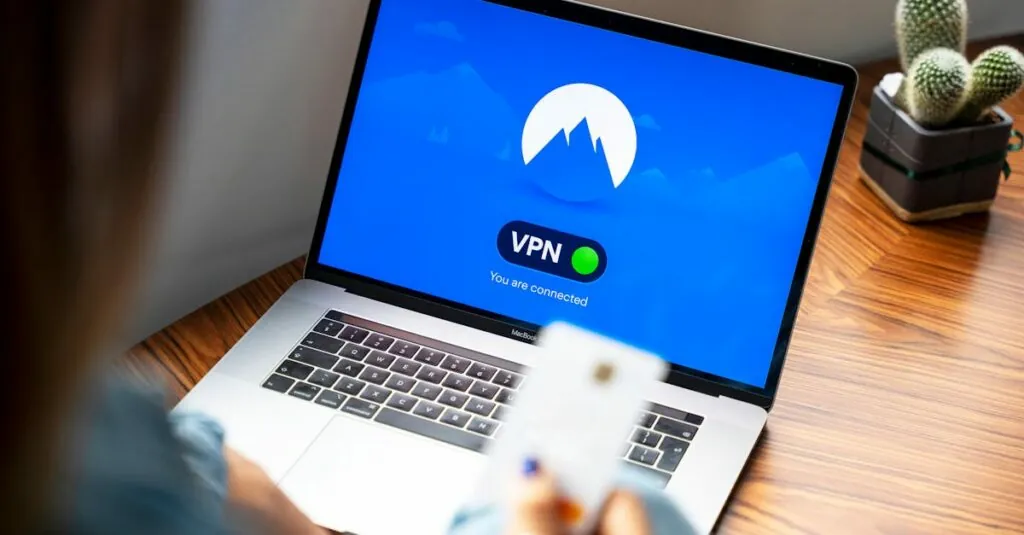Table of Contents
ToggleWhen it comes to smartphones, Apple’s iPhone 13 and 14 are like siblings at a family reunion—similar, yet distinct in their quirks. Both models boast impressive features that make them stand out, but if you’re trying to decide which one deserves a spot in your pocket, you’ve come to the right place.
Imagine the iPhone 13 as the reliable older sibling who’s always there for you, while the iPhone 14 struts in with a few extra bells and whistles, ready to steal the spotlight. With camera upgrades, performance boosts, and a sprinkle of new tech magic, the iPhone 14 might just make you question your loyalty. So, let’s dive into the nitty-gritty and uncover what sets these two tech titans apart, ensuring you pick the perfect companion for your digital adventures.
Overview of iPhone 13 and 14
iPhone 13 and iPhone 14 showcase advanced technology with notable differences. The iPhone 14 features an upgraded A15 Bionic chip, providing enhanced performance compared to the A15 found in the iPhone 13. Users experience faster graphics and improved power efficiency in the newer model.
Camera upgrades stand out in the iPhone 14. It boasts innovative photography capabilities, such as improved low-light performance and a photonic engine for better image quality. Enhanced computational photography options help create exceptional photos and videos.
Design elements exhibit subtle changes. The iPhone 14 maintains a similar aesthetic to its predecessor but introduces new color options. These fresh colors appeal to various user preferences and styles.
Battery life receives a notable boost in the iPhone 14. Users can expect longer usage times with efficient battery management. This improvement allows for a more seamless daily experience without the constant worry of recharging.
Storage capacity varies between both models. iPhone 14 offers configurations starting at 128GB up to 512GB, while the iPhone 13 ranges from 128GB up to 256GB. This flexibility in storage options caters to varying needs, making the iPhone 14 more suitable for users who require additional space.
In terms of display, both devices utilize the Super Retina XDR technology. While the resolution remains consistent, the iPhone 14 enhances brightness capabilities, offering better visibility in bright conditions.
Overall, the iPhone 14 presents significant advancements over the iPhone 13, particularly in performance, camera functionality, battery life, and storage options. Users evaluating their choices will find these differences crucial in making an informed decision.
Design and Build Quality
The designs of the iPhone 13 and iPhone 14 share similarities, yet distinct differences exist in their overall build quality.
Dimensions and Weight
The iPhone 14 has slightly altered dimensions compared to the iPhone 13. Specifically, the iPhone 14 measures 147.5 x 71.5 x 7.8 mm, while the iPhone 13 measures 146.7 x 71.5 x 7.65 mm. Weight varies, too; the iPhone 14 weighs 172 grams, compared to the iPhone 13’s 174 grams. These small adjustments result in a more ergonomic feel for the user, making the iPhone 14 comfortable to hold and use daily. Users may find that the slight weight difference is negligible but can enhance overall handling.
Material Differences
Both models utilize high-quality materials, yet the iPhone 14 introduces subtle refinements. The frame of the iPhone 13 features aluminum, while the iPhone 14 also uses aerospace-grade aluminum. The improved build showcases greater durability and resistance to scratches. Additionally, Ceramic Shield glass, present on both models, is designed for enhanced toughness. Colors for the iPhone 14 include new shades such as deep purple, while the iPhone 13 offers a range of familiar hues. These choices cater to a wider variety of personal preferences among users.
Display Features
Both the iPhone 13 and iPhone 14 boast impressive display features, showcasing vibrant visuals. Each model utilizes Super Retina XDR technology, ensuring exceptional color accuracy and detail.
Screen Size and Technology
The screen size remains consistent between the two models, measuring 6.1 inches diagonally. Both devices offer OLED technology, delivering deep blacks and bright colors. Display resolution for each model is 2532 x 1170 pixels, providing sharp visuals at 460 pixels per inch. The iPhone 14 does include improvements in color accuracy and brightness, enhancing the overall viewing experience.
Refresh Rate and Brightness
Refresh rate for both the iPhone 13 and iPhone 14 is set at 60Hz, ensuring smooth scrolling and responsiveness. However, the iPhone 14 features a peak brightness of 2000 nits outdoors, surpassing the iPhone 13’s 1200 nits maximum. This increase in brightness leads to better visibility in sunlight and bright environments. Enhanced peak brightness improves usability for users who often rely on their phones in varying lighting conditions.
Performance Comparison
The performance comparison between the iPhone 13 and iPhone 14 reveals significant upgrades in speed and efficiency.
Processor and Speed
The iPhone 14 features an updated A15 Bionic chip with a 6-core CPU that enhances overall performance. This upgrade translates into faster graphics rendering and improved multitasking capabilities. Users notice smoother transitions and quicker app launches on the iPhone 14 compared to its predecessor. Advanced processing capabilities enable the iPhone 14 to handle demanding tasks with ease. The 4-core GPU in the iPhone 14 operates more efficiently, allowing for enhanced gaming experiences and graphics-intensive applications.
Battery Life
Significant improvements exist in battery life between the two models. The iPhone 14 supports longer usage times, lasting up to 20 hours of video playback. With this enhancement, users can enjoy more activities without frequent recharging. The iPhone 13 provides decent battery performance, lasting around 19 hours in similar conditions. Apples efficiency optimizations in the iPhone 14 further enhance overall power management. In real-world usage, many users report better longevity while using various applications and features throughout the day.
Camera Capabilities
Both the iPhone 13 and iPhone 14 feature impressive camera systems, yet the iPhone 14 introduces several notable improvements.
Rear Camera Specifications
The iPhone 14 boasts a dual-camera system with a 12MP ultra-wide lens and a 12MP wide lens, similar to its predecessor. Improved low-light performance enhances capturing images in challenging lighting conditions. Night mode on the iPhone 14 delivers sharper, clearer photos compared to the iPhone 13, particularly in dim settings. Additionally, the iPhone 14 includes Photonic Engine technology, significantly enhancing detail and color accuracy in photos. This advanced processing helps achieve better shots across various scenarios. Enhanced optical image stabilization on the iPhone 14 minimizes blurring, ensuring steady images and smoother video recordings.
Front Camera Enhancements
The front camera of the iPhone 14 sees improvements with a 12MP TrueDepth camera. Enhanced autofocus enables better performance, especially in portraits or group selfies. The addition of Cinematic mode allows users to record video with depth-of-field transitions, resulting in professional-quality footage. On the iPhone 14, the front camera supports Night mode, meaning selfies can turn out great even in low-light conditions. Moreover, improved smart HDR capabilities on the front camera ensure enhanced detail and color rendering for all faces captured. Overall, these enhancements elevate the iPhone 14’s front camera experience over the iPhone 13.
Software and Features
Both iPhone 13 and iPhone 14 showcase impressive software capabilities, yet notable differences exist that enhance user experience.
iOS Differences
iOS 16 powers the iPhone 14, introducing advanced features not available on iPhone 13. Users gain access to customizable lock screens and enhanced notification management. The latest version accommodates Focus modes that streamline notification handling based on user activities. Additionally, iPhone 14 benefits from features like Live Text and Visual Look Up, which boost interactivity with the camera and apps. Significant software optimizations on the iPhone 14 support the upgraded hardware efficiently, allowing for smoother performance in daily tasks.
Unique Features of iPhone 14
iPhone 14 includes several unique features enhancing usability. Crash Detection technology provides emergency assistance in case of serious accidents by automatically contacting emergency services. Photonic Engine enhances photographic capabilities, improving low-light performance significantly. Action mode offers smoother video recording, ideal for capturing dynamic moments without shaky footage. Improved FaceTime features allow for Spatial Audio, making conversations feel more immersive. Enhanced privacy settings ensure users control their data better than before, reflecting Apple’s commitment to user security.
Price and Availability
Pricing reflects the differences in features and specifications between the iPhone 13 and iPhone 14. The iPhone 13 starts at $699 for the base 128GB model. In contrast, the iPhone 14 also starts at $799 for the same storage capacity. Increased features in the iPhone 14, including enhanced performance and improved camera capabilities, justify the higher price point.
Both models offer multi-tiered options for storage, impacting their respective prices. For the iPhone 13, users can choose from 128GB, 256GB, and 512GB options. The iPhone 14 expands this range with 128GB, 256GB, and 512GB as well, allowing for more flexibility.
Availability varies by retailer, impacting user access. Typically, both phones can be purchased through Apple’s official website, authorized retailers, and major carriers. New iPhone 14 units may experience high demand, affecting stock levels during initial release periods.
As of October 2023, the iPhone 13 remains accessible in the market due to its previous launch, but potential buyers might find it less prominent in retail locations. Promotional offers for older models often arise as new models enter, further influencing pricing and availability dynamics.
General shipping times differ based on the model and retailer. Expect delivery times to fluctuate during peak purchasing seasons. Overall, assessing budget considerations alongside storage needs can help users select which phone best suits their requirements.
Choosing between the iPhone 13 and iPhone 14 ultimately depends on individual needs and preferences. The iPhone 14 stands out with its enhanced performance features and camera capabilities. Users who prioritize photography and gaming will likely appreciate the upgrades offered by the newer model.
While the iPhone 13 remains a solid choice with its reliable performance and value, the iPhone 14’s improvements in battery life and software features make it a compelling option for those seeking the latest technology. Ultimately, both models deliver exceptional experiences, ensuring that users can find a device that fits their lifestyle.




